In Fig. the bar AC has a mass of 50 g. It slides frictionlessly on the metal strips 40 cm apart at the edges of the incline. A current I flows through these strips and the bar, as shown. There is a magnetic field |Bx|=0.02T directed in the -y direction. How much must I be if the rod is to remain motionless? Neglect the slight overhang of the rod.
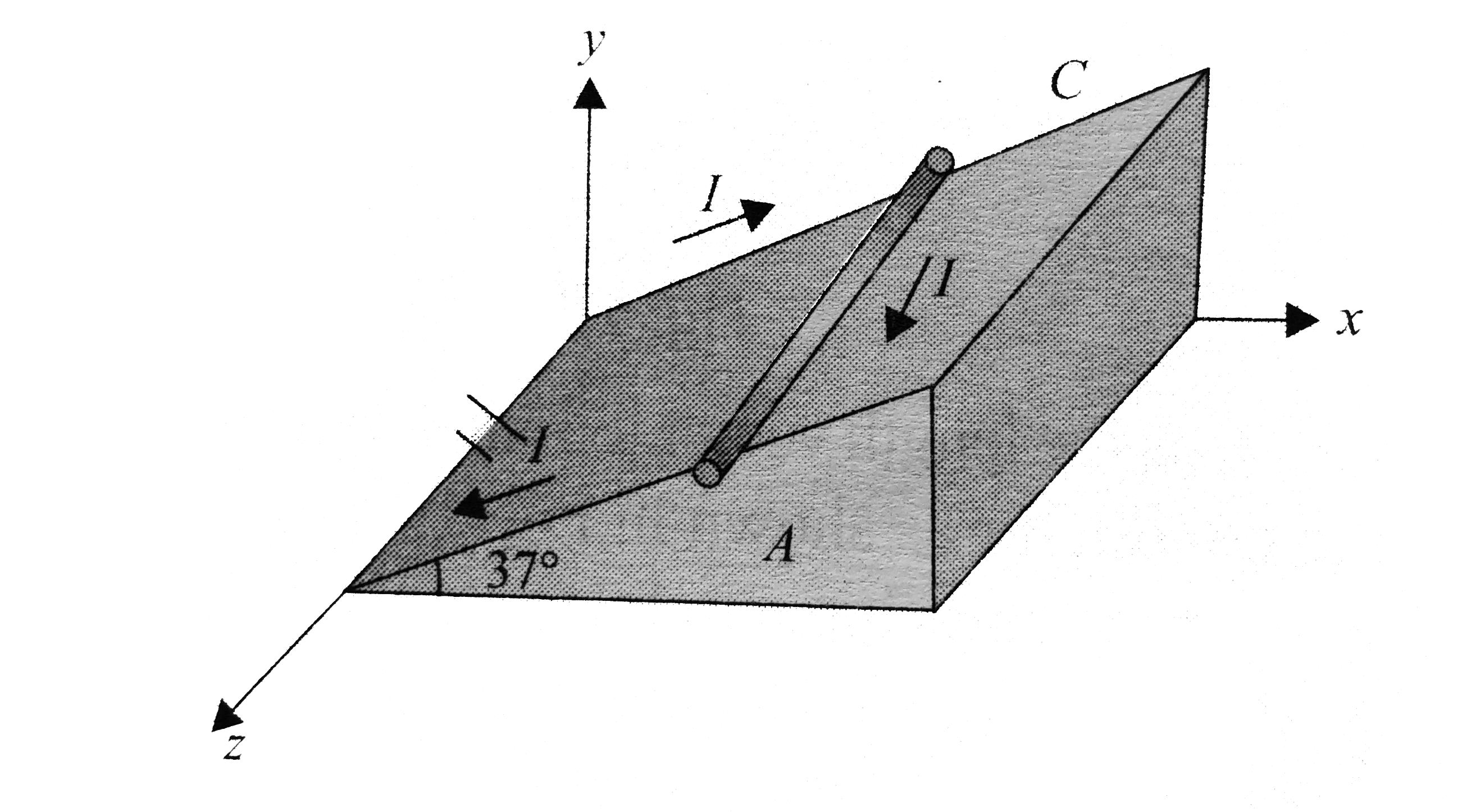
Magnetic force is along the positive x-axis. If motion is to occur
along the incline, ∑F=0:IL∣∣By∣∣cos37∘=mgsin37∘ from
which
I=mgtan37∘L∣∣By∣∣=(0.050)(9.8)(0.75)(0.40)(0.02)=46A
Topper's Solved these Questions
- BOOK - CENGAGE PHYSICSCHAPTER - MAGNETIC FIELD AND MAGNETIC FORCESEXERCISE - Exercise1.314videos
MAGNETIC FIELD AND MAGNETIC FORCES
- BOOK - CENGAGE PHYSICSCHAPTER - MAGNETIC FIELD AND MAGNETIC FORCESEXERCISE - Exercises Subjective10videos
MAGNETIC FIELD AND MAGNETIC FORCES
- BOOK - CENGAGE PHYSICSCHAPTER - MAGNETIC FIELD AND MAGNETIC FORCESEXERCISE - Exercise 1.122videos
MAGNETIC FIELD AND MAGNETIC FORCES
- BOOK - CENGAGE PHYSICSCHAPTER - KINETIC THEORYEXERCISE - Question Bank31videos
KINETIC THEORY
- BOOK - CENGAGE PHYSICSCHAPTER - Magnetism and MatterEXERCISE - Question Bank50videos
Magnetism and Matter
Similar Questions
A current of I ampere is flowing through each of the bent wires as shown the magnitude and direction of magnetic field at O is
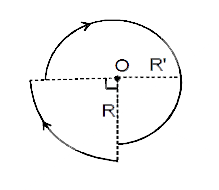 View Solution
View SolutionA 10 cm length of wire with a mass of 20g is attached frictionlessly to the vertical segments of a wire in which a current I flows. The surrounding has horizontal field B=104G and the vertical direction is shown in fig. What must be the current I (in A) to maintain the 10cm wire in an equilibrium position?
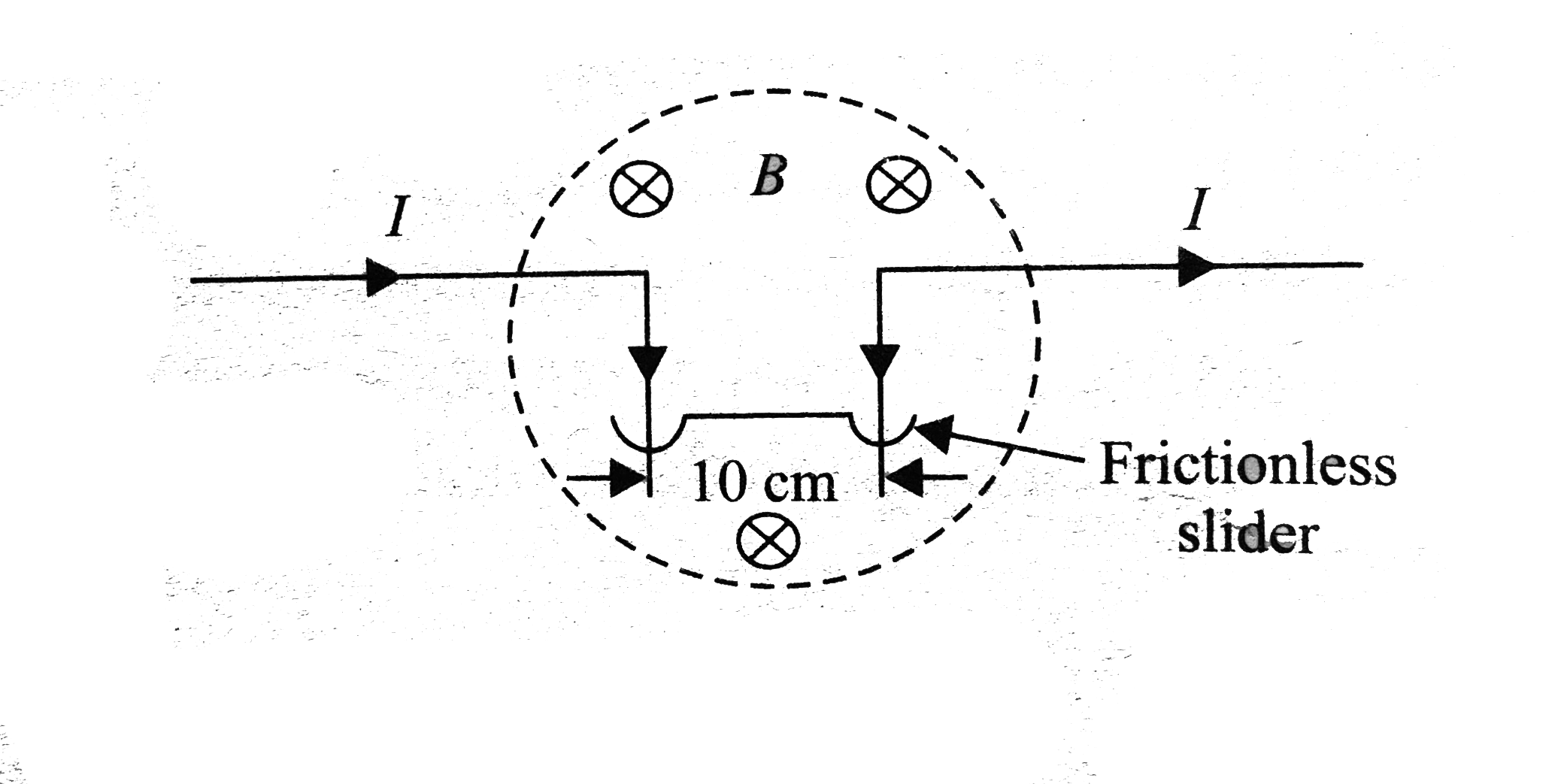 View Solution
View Solution
Knowledge Check
- Question 1 - Select One
A current I flows through a closed loop as shown in figure. The magnetic field induction at the centre 0 is
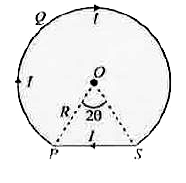 Aμ0I4πRθBμ0I4πR(θ+sinθ)Cμ0I4πR(π−θ+sinθ)Dμ0I4πR(π−θ+tanθ)
Aμ0I4πRθBμ0I4πR(θ+sinθ)Cμ0I4πR(π−θ+sinθ)Dμ0I4πR(π−θ+tanθ) - Question 2 - Select One
A thin, uniform rod with negligible mass and length 0.200m is attached to the floor by a frictionless hinge at point P (as shown in fig) A horizontal spring with force constant k=4.80Nm−1 connects the other end of the rod to a vertical wall. The rod to a vertical wall. The rod is in a uniform magnetic field B=0.340T directed into the plane of the figure. There is current I=6.50 A in the rod, in the direction shown.
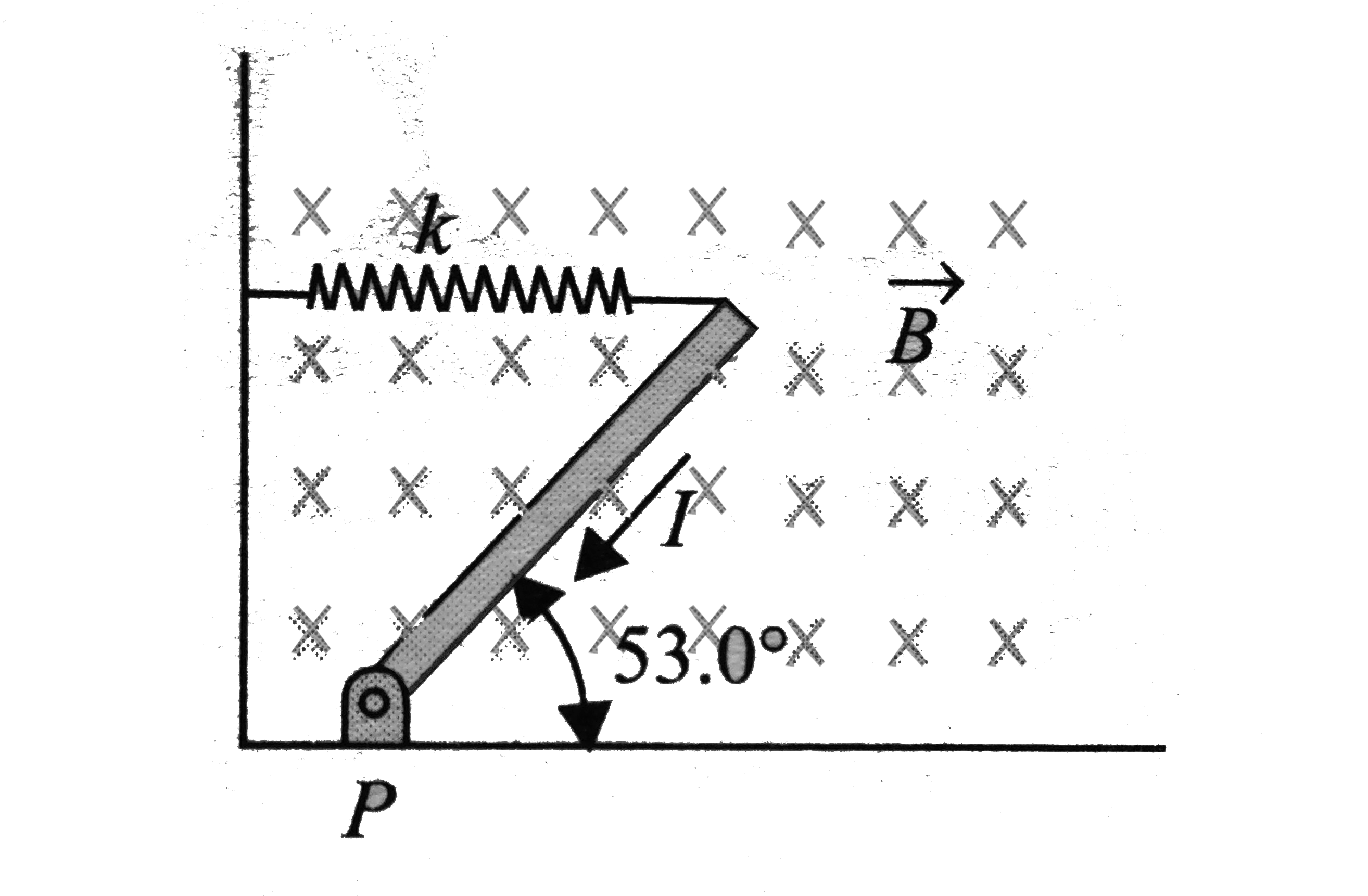
Calculate the torque due to the magnetic force on the rod, for an axis at P.A0.0442Nm−1, clockwiseB0.0442Nm−1, anticlockwiseC0.022Nm−1, clockwiseD0.022Nm−1, anticlockwise - Question 3 - Select One
The current is flowing in south direction along a power line. The direction of magnetic field above the power line (neglecting earth's field) is
ASouthBEastCNorthDWest
What is the direction of magnetic field lines outside a bar-magnet?
View SolutionWhat is the direction of magnetic field lines outside a bar-magnet?
View SolutionA current of 1.5 A is flowing through a triangle of side 9 cm each .The magnetic field at the centroid of the triangle is : (Assume that the current is flowing in the clockwise direction .)
View SolutionA metal bar with length L , mass m and resistance R is polaced on frictionless metal rails that are inclined at an angle ϕ above the horizontal. The rails have negiligible resistance. There is a uniform magnetic field of nagnitude B direction download in the figure. The bar is released from rest and slide down the rails.
(a) Is the direction of the current induced in the bar from a and b or b to a ?
(b) What is the terminal speed of the bar ?
What is the induced current in the bar when the terminal speed has been reached ?
(d) After the terminal speed has been reached, at what rate is electrical energy being converted to thermal energy in the resistance of the bar ?
(e) After the terminal speed has been reached, at what rate is work being done on the bar by gravity? Compare your answer to that in part (d).
 View Solution
View SolutionAssertion : A direct current flows through a metallic rod, produced magnetic field only outside the rod.
Reason : There is no flow of charge carriers inside the rod.View Solution

